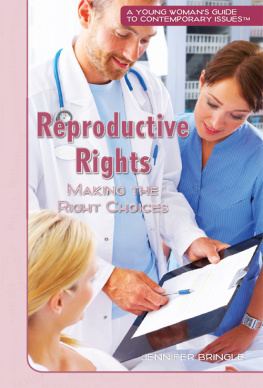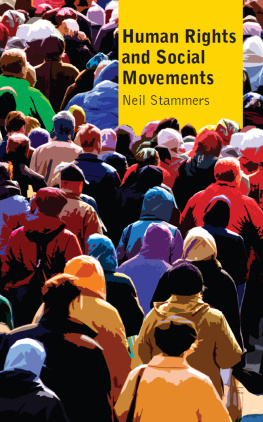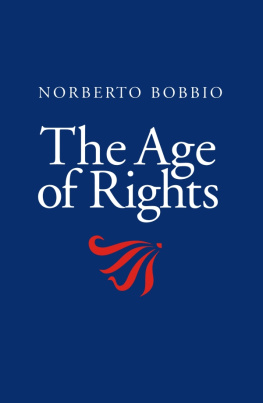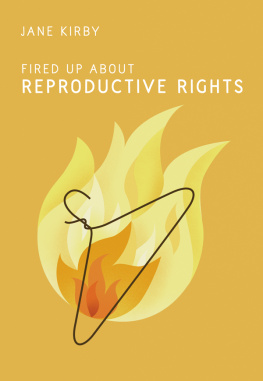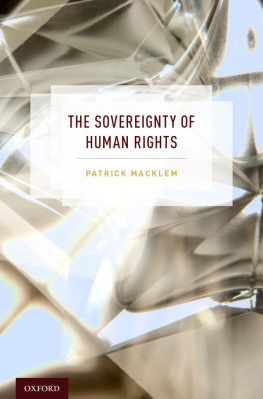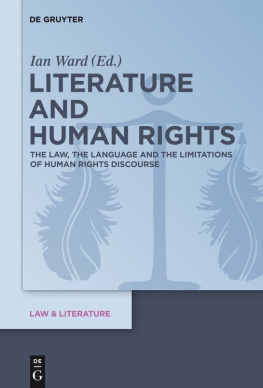Zakiya Luna - Reproductive Rights as Human Rights
Here you can read online Zakiya Luna - Reproductive Rights as Human Rights full text of the book (entire story) in english for free. Download pdf and epub, get meaning, cover and reviews about this ebook. publisher: NYU Press, genre: Politics. Description of the work, (preface) as well as reviews are available. Best literature library LitArk.com created for fans of good reading and offers a wide selection of genres:
Romance novel
Science fiction
Adventure
Detective
Science
History
Home and family
Prose
Art
Politics
Computer
Non-fiction
Religion
Business
Children
Humor
Choose a favorite category and find really read worthwhile books. Enjoy immersion in the world of imagination, feel the emotions of the characters or learn something new for yourself, make an fascinating discovery.

- Book:Reproductive Rights as Human Rights
- Author:
- Publisher:NYU Press
- Genre:
- Rating:4 / 5
- Favourites:Add to favourites
- Your mark:
- 80
- 1
- 2
- 3
- 4
- 5
Reproductive Rights as Human Rights: summary, description and annotation
We offer to read an annotation, description, summary or preface (depends on what the author of the book "Reproductive Rights as Human Rights" wrote himself). If you haven't found the necessary information about the book — write in the comments, we will try to find it.
Reproductive Rights as Human Rights — read online for free the complete book (whole text) full work
Below is the text of the book, divided by pages. System saving the place of the last page read, allows you to conveniently read the book "Reproductive Rights as Human Rights" online for free, without having to search again every time where you left off. Put a bookmark, and you can go to the page where you finished reading at any time.
Font size:
Interval:
Bookmark:
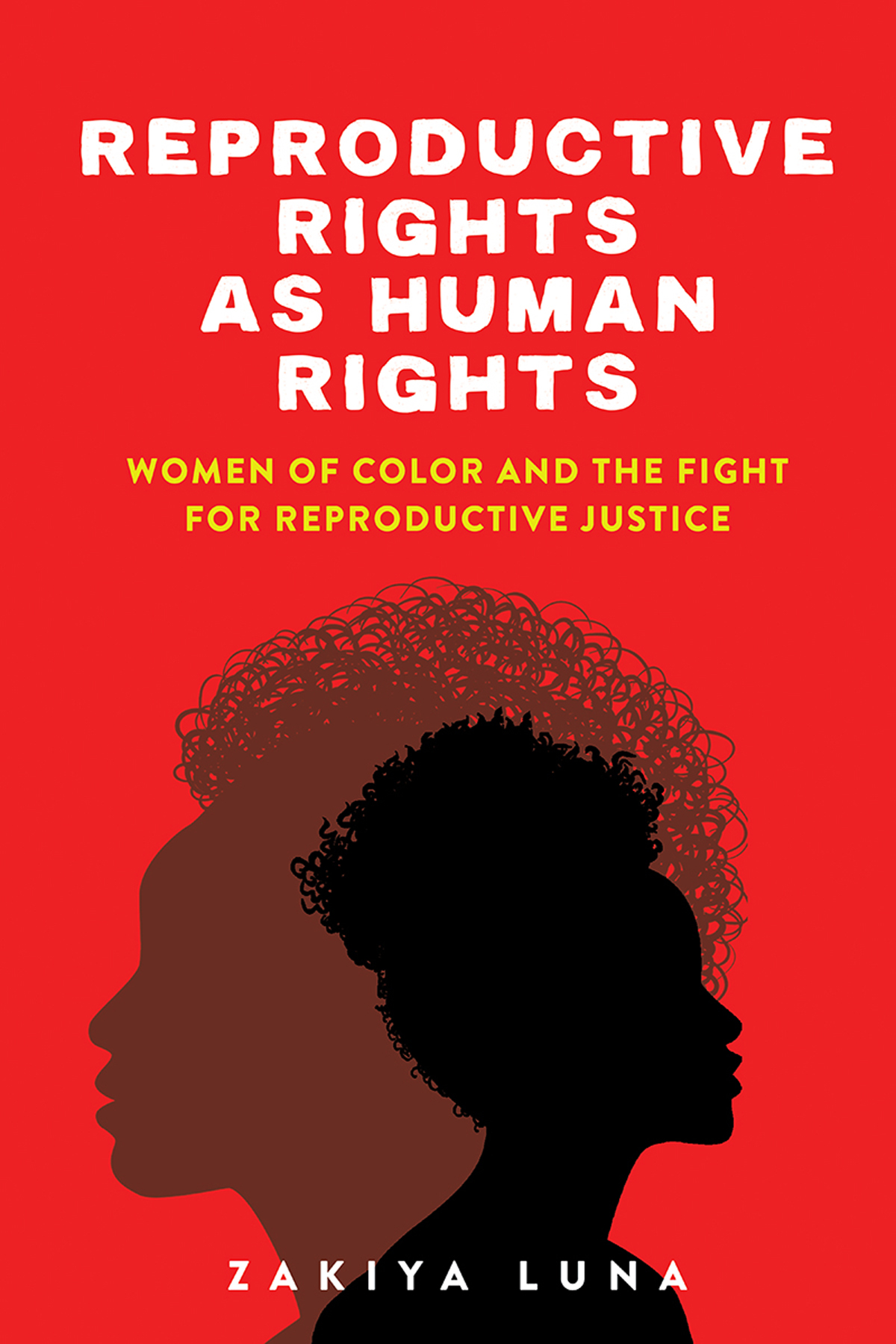
REPRODUCTIVE RIGHTS AS HUMAN RIGHTS
Reproductive Rights as Human Rights
Women of Color and the Fight for Reproductive Justice
Zakiya Luna

NEW YORK UNIVERSITY PRESS
New York
NEW YORK UNIVERSITY PRESS
New York
www.nyupress.org
2020 Zakiya Luna
All rights reserved
Parts of initially appeared from the following published article: Marching Toward Reproductive Justice: Coalition (Re)Framing of the March for Womens Lives, Sociological Inquiry (2010). Used with permission.
References to Internet websites (URLs) were accurate at the time of writing. Neither the author nor New York University Press is responsible for URLs that may have expired or changed since the manuscript was prepared.
Please contact the Library of Congress for Cataloging-in-Publication data.
ISBN: 978-1-4798-5202-4 (hardback)
ISBN: 978-1-4798-3129-6 (paperback)
New York University Press books are printed on acid-free paper, and their binding materials are chosen for strength and durability. We strive to use environmentally responsible suppliers and materials to the greatest extent possible in publishing our books.
Manufactured in the United States of America
10 9 8 7 6 5 4 3 2 1
Also available as an ebook
To mom: Thanks for bringing us to anti-apartheid rallies, university classes, and skate rinks.
While it was a warm and humid day in Miami, Florida that July day in 2011, the air conditioning blasted inside the hotel lobby. Low lights were on although they seemed almost unnecessary with the sun illuminating the space. Low music filled the air, almost covered by the clatter of people talking in a variety of languages. Further back, a curving staircase spanned the back of the lobbyit would become the setting for various conference photos, including a Black reproductive justice one in which Black women, including myself, posed to show the legacy of Black women in reproductive justice activism. The bottom stair ended near the floor-to-ceiling windows, which highlighted the main attraction that awaited guests: a deck with poolside service. Behind the deck, a wooden boardwalk went on for miles, followed by a dreamy expanse of beach that cuddled the sapphire ocean as far as the eye could see. To the right of the entrance, the slick white floor tile led to the official conference ballroom that would serve as the site for the plenaries for SisterSong Women of Color Reproductive Justice Collectives Lets Talk about Sex! (LTAS) conference.
At the time, SisterSong wasand to some extent still isthe group most associated with the phrase reproductive justice (RJ) and its basic definition: the right to not have children, the right to have children, and the right to parent. Thus, SisterSong gatherings attracted an array of participants experienced in organizations for reproductive health, reproductive rights, and reproductive justice, or just interested generally. Throughout the following days, hundreds of conference attendeeswomen, men, and gender-nonbinary peoplewould pass through that lobby. They would wear everything from African dashikis to peasant blouses to skin-tight leather, with shoes ranging from Converse sneakers to high heels. Attendees wore their hair in cropped cuts, braids, and Afros, in a range of colors, some of which matched Miamis fauna, and some were even bald. They were of various racial backgrounds and skin tones. Laughter, yelps, and multiple languages filled the air throughout the day. Some lived in Miami whereas others had traveled across the globe for the momentous event.
This was the first LTAS conference since 2007, and since the election of President Obama. The 2011 theme was Love, Legislation, Leadership. The organizers chose the beach location purposefully: We intentionally planned this weekend as a destination conference because we know how much Reproductive Justice activists work. It is non-stop and often we do not allow time to take care of ourselves. The opening plenary began with a Welcome to the Indigenous Land by two women from area tribes. The conference coordinators welcomed us, followed by a city commissioner who awkwardly encouraged us to talk about sex but not on the boardwalk, reminding us of the appropriate social norms. During the opening plenary, SisterSongs national coordinator, Loretta Ross, welcomed everyone. LTAS 2011 was an even more special conference than most, as Ross announced that she was retiring after over a decade with the collective; Laura Jimnez, the long-time deputy coordinator, would leave SisterSong to direct California Latinas for Reproductive Justice; and Heidi Williamson, the policy coordinator, was leaving to work in Washington, DC. As Ross gave the history of SisterSong, she proclaimed, RJ exists because of human rights.
Over those days, about fifty workshops occurred. Preconference institutes had already included SisterSong staff presenting RJ101 and RJ102, Hampshire Colleges Civil Liberties and Public Policy Institute for young leaders of color, a Queer People of Color and Indigenous People (QPOC) institute hosted by SisterSongs QPOC mini-community, and another on White women as allies. Dorothy Roberts signed books in an upstairs room, where organizations and vendors staffed tables. Brown Girl Burlesque (BGB) performed one evening, which garnered some controversy. When the idea of BGB performing had been raised earlier in the year, the idea received both support and opposition from key people in SisterSong, who held different views on the place of the erotic in women of colors self-expression. To bring the conversation to a larger set of people, SisterSong had hosted a public conference call a few months prior in which the focus was the politics of sex work. At LTAS, the BGB performance was highly promoted, as was BGBs preceding conference workshop. The workshop offered an opportunity to meet the performers and learn about their philosophy of burlesque as an empowering practice for women of color. Fliers and word of mouth advertised other eventsfor example, that the cervical self-exam workshop would occur in a private hotel room rather than a standard conference room.
Throughout those few days people shared their experiences in the movements for reproductive health, rights, and justice, laughed, danced, reveled in natureincluding a group who went skinny dipping in the warm water at nightlearned from each other, and just breathed. These few days were ones of joyous community as the reproductive justice movement subtly modeled the goal: to make life always feel like this. It was a reminder that human flourishing meant not just mere existence, but people being able to express their full humanity and have that humanity respected and even celebrated by the people around them. We understood that this was what it could feel like if SisterSong realized its mission: to amplify and strengthen the collective voices of Indigenous women and women of color to ensure reproductive justice through securing human rights.
In this book I explore in more depth what this mission meant. When defining the US reproductive justice movement, various activists and scholars note that reproductive justice is human rightsbased. In many scholarly and activist accounts, the phrases human rights and reproductive justice are continually linked, as if there was an inevitability to the way the RJ movement developed. Yet, the way human rights has been conceptualized and received in movement practice has not been clarified.
Font size:
Interval:
Bookmark:
Similar books «Reproductive Rights as Human Rights»
Look at similar books to Reproductive Rights as Human Rights. We have selected literature similar in name and meaning in the hope of providing readers with more options to find new, interesting, not yet read works.
Discussion, reviews of the book Reproductive Rights as Human Rights and just readers' own opinions. Leave your comments, write what you think about the work, its meaning or the main characters. Specify what exactly you liked and what you didn't like, and why you think so.


